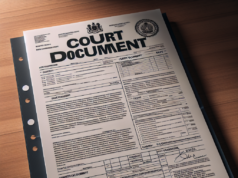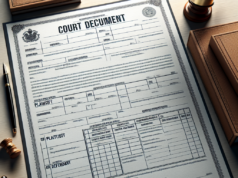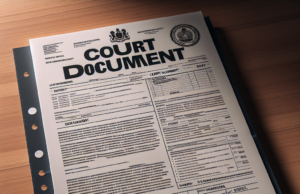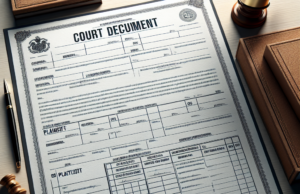
ALABAMA DIVORCE LAWS & REGULATIONS UPDATE 2023
A DECADE OF CHANGE: AN UPDATED OVERVIEW OF ALABAMA’S DIVORCE LAWS AND REGULATIONS TIMELINE (2013-2023)
Over the past ten years, Alabama’s divorce laws have undergone significant revisions, reflecting the state’s efforts to adapt to changing societal norms while ensuring fairness and clarity in the divorce process. From residency requirements to property division, these changes highlight Alabama’s commitment to addressing the complexities of divorce. This article provides an overview of the key updates in Alabama’s divorce laws and regulations from 2013 to 2023, presented in bullet points:
2013 – No-Fault Divorce Enactment:
– Adoption of the “no-fault” divorce option, allowing couples to file for divorce without assigning blame.
– Introduction of irretrievable breakdown as a valid ground for divorce.
2014 – Child Custody and Visitation Guidelines Enhancement:
– Strengthened focus on promoting the best interests of the child in custody and visitation decisions.
– Introduction of guidelines to ensure both parents’ involvement and a stable environment for the child.
2015 – Enhanced Residency Requirements:
– Modification of residency requirements, requiring at least one spouse to be a resident of Alabama for a specified period before filing for divorce.
2016 – Alimony Reform:
– Introduction of guidelines to provide more consistency and predictability in alimony awards.
– Consideration of factors such as marriage duration, financial need, and ability to pay.
2017 – Property Division Updates:
– Clarification of the criteria for equitable distribution of marital property during divorce proceedings.
– Consideration of each spouse’s contribution to the marriage, including non-financial contributions.
2018 – Expedited Divorce Process:
– Implementation of measures to streamline the divorce process, reducing unnecessary delays and administrative burdens.
2019 – Mediation Promotion:
– Encouragement of divorce mediation to facilitate amicable resolutions and reduce litigation.
– Emphasis on collaboration and cooperation between spouses.
2020 – Digital Documentation Acceptance:
– Introduction of provisions allowing digital documentation and electronic signatures in divorce proceedings, enhancing efficiency.
2021 – Updates to Child Support Guidelines:
– Review and adjustment of child support guidelines to reflect changing economic realities and ensure adequate support for children.
2022 – Parenting Plan Requirements:
– Implementation of guidelines requiring divorcing parents to submit detailed parenting plans, outlining responsibilities and arrangements for the children.
2022 – Domestic Violence Protections:
– Strengthening of provisions to protect victims of domestic violence during divorce proceedings.
– Implementation of safeguards to prevent further harm and intimidation.
2023 – Online Filing Options:
– Introduction of online divorce filing options, making the process more accessible and convenient for couples.
2023 – Consideration of Marital Misconduct:
– Exploration of potential changes to allow consideration of marital misconduct as a factor in certain divorce cases.
2023 – Enhancing Spousal Support Guidelines:
– Consideration of updates to spousal support guidelines, ensuring fair and appropriate awards based on financial circumstances.
Alabama’s divorce laws have evolved over the past decade, reflecting the state’s commitment to modernize and improve the divorce process. These changes demonstrate Alabama’s proactive approach to addressing the complexities of divorce while protecting the rights and interests of all parties involved. As the state continues to adapt its laws, it remains essential for stakeholders, policymakers, and the public to engage in informed discussions that balance the need for fairness with the evolving dynamics of family relationships.
Residency and Filing Needs
There are some aspects of divorce in Alabama that you need to know about before proceeding with anything. First off, if one spouse intends to file, that spouse will then be called the ‘Plaintiff.’ The other spouse will be called the ‘Defendant’ in the matter.
Once divorce is eminent, there are some requirements in the state of Alabama that need to be met before filing.
• Requirement 1: Plaintiff must be a bona fide resident of the state of Alabama for at least six months before filing (if Defendant is a non-resident).
• Requirement 2: Divorce may then be filed either in the circuit court of the Defendant’s county or in the circuit court of both parties during the marriage upon separation.
• Requirement 3: If Defendant is a non-resident of Alabama, divorce proceedings will then move forward in the Plaintiff’s county circuit court.
Reasons for Divorce in Alabama
There are many reasons for it, but for the most part the court separates all reasons into two categories:
• No-Fault Divorce
• Fault Divorce
“No-Fault” basically can mean three things –
1) Both Parties to the Marriage Keep Fighting or Arguing
2) Both Parties to the Marriage Simply Don’t Want to Continue
3) One or Both Parties Leaving the Home for at Least One Year or More
“Fault” divorce in Alabama, however, is an entirely different situation.
Grounds for that divorce can include one or more of these as determined by a court of law:
• Physical Harm by One Party Toward the Other
• Adultery
• Imprisonment for Two Years and Sentencing for at Least Seven Years
• Alcohol Abuse
• Drug Abuse
• Hospitalization Due to Mental Condition and/or Illness for Five Straight Years
• If Wife Became Pregnant Without Husband Knowing (“Fault” Divorce Awarded to Husband)
• Physical Incapacitation
• If Wife Has Moved Out of Residency for Two Years Without Support From Husband (“Fault” Divorce Awarded to Wife)
Both “No-Fault” and “Fault” divorce have separate stipulations that can affect custody, child support, and spousal support.
The Definition of “Legal Separation” Versus “Divorce”
Of course, both parties to a marriage may elect to “legally separate” instead of proceed through a divorce. What’s the difference?
A legal separation is essentially both parties agreeing to go their separate ways without dissolving the marriage. There are many reasons for doing this, one being the need to retain certain benefits within the marriage agreement that would otherwise be discontinued upon a divorce. For instance: medical insurance.
Typically, though, a legal separation does lead to a divorce agreement, in which case all grounds for divorce move forward, as well as the marriage then becomes dissolved in a court of law along with any other benefits and assets, questions of child custody, parenting time, and support (if children are in fact present).
The Primary Documents For a Divorce in Alabama
They are listed as follows:
• Marital Settlement Agreement
• Schedule for Visitation/Parenting Time of Minor Children
• Affidavit of Residency
• Commission to Take Testimony
• Affidavit Regarding the Children
• Answer, Waiver, and Agreement for Taking Testimony
• Complaint for Divorce
• And Judgment of Divorce
Property Distribution
When it comes to divorce in Alabama, it’s important to know that the state favors “equitable distribution.” This simply means that all assets are divided equally among both parties regardless of either party’s wishes. Sometimes, though, this doesn’t necessarily mean that “equitable” will be equal. Rather, the word fair is more the proper term to be used when dealing with property distribution.
Typically the court will encourage both the Plaintiff and Defendant to come to an agreement about property distribution. If there’s no agreement, the court will decide. Certain stipulations surrounding a “Fault” divorce in Alabama, though, may result in an “inequitable” distribution of assets.
In addition, the court may also award the wife her former or maiden name upon agreement of the divorce.
On the Subject of Spousal Support
This issue may only be relevant if the court or both parties see a need for either party to support the other financially for any reason either on a temporary or permanent basis. The only requirement, though, would be that the marriage would have to last ten years or longer.
Dealing With Child Custody
Generally speaking, parents can come to an agreement on this matter regarding divorce in Alabama in several ways:
• Joint Physical Custody
• Sole Physical Custody
• Joint Legal Custody
• Sole Physical Custody
“Joint Physical Custody” is essentially sharing custody of the child(ren) in terms of where the child(ren) may live: either in mother’s residence, or father’s residence. Child(ren) retains two addresses. Both parties are equally responsible for the well-being of the child(ren) as well as for the education of the child(ren).
“Sole Physical Custody” is when one party retains physical custody of child(ren) and the other party retains “Visitation Rights.”
“Joint Legal Custody” is when both parents share the right to make important decisions in the life/lives of the child(ren), which may include legal name, lifestyle, needs, etc. etc.
“Sole Legal Custody” is when only one parent retains the right to make important decisions in the life/lives of the child(ren).
How to Determine Child Support If Necessary
Typically, the non-custodial parent pays child support. The Income Shares Model is employed to determine the amount. By combining W2’s and other worksheets, an amount is determined that would best suit the needs of the child(ren) without unfavorable financial problems on the non-custodial party.
Generally speaking, both parties may agree to an amount. But in the event that a Plaintiff and Defendant don’t, the court may utilize state support guidelines to arrive to a decision as to how much support is necessary for the child(ren).



























